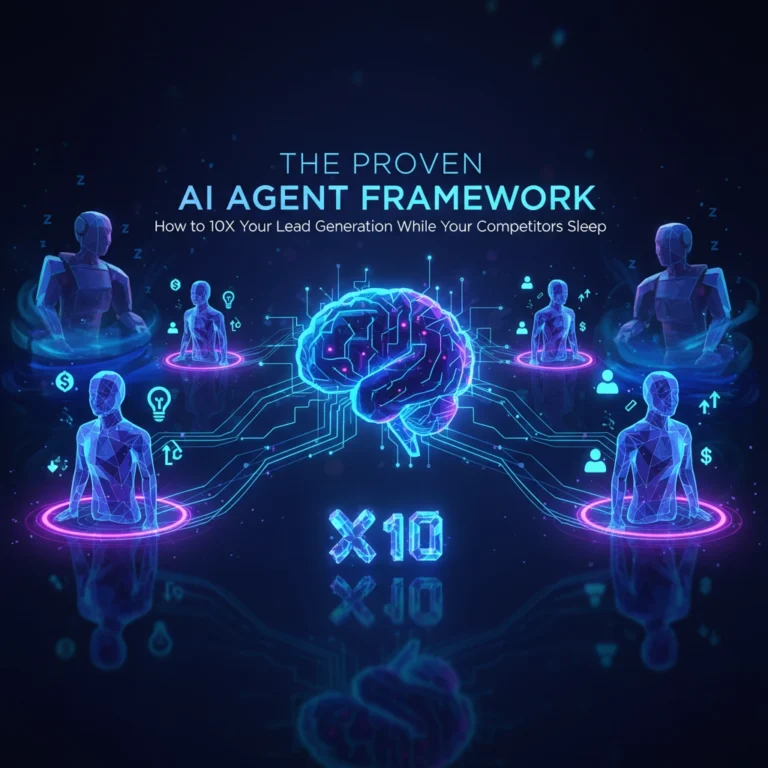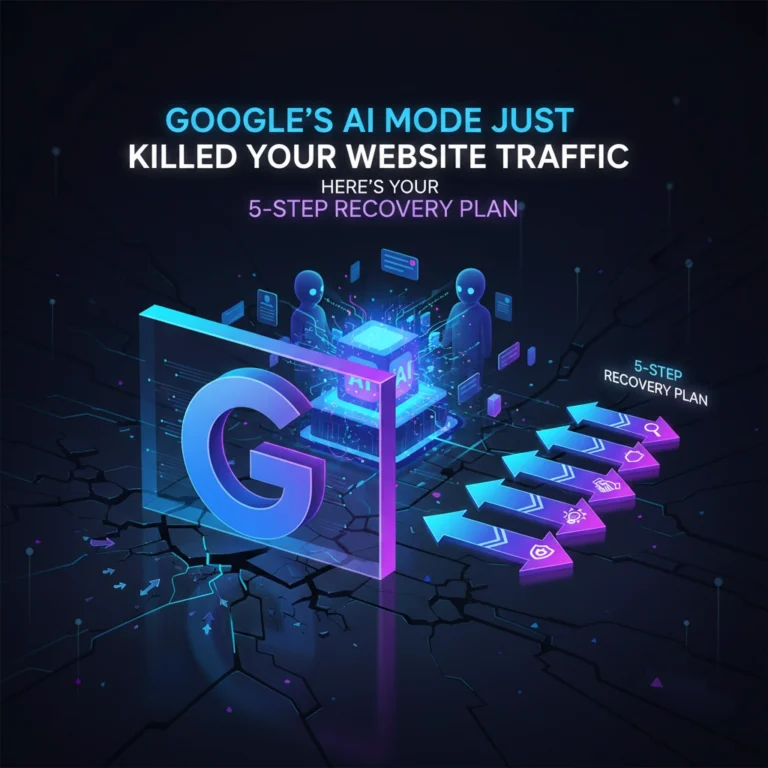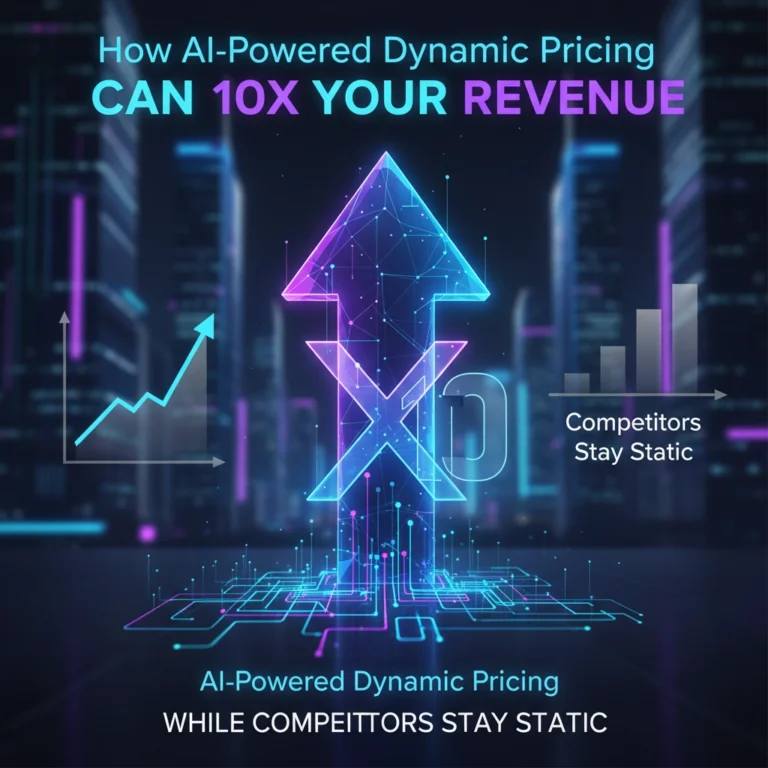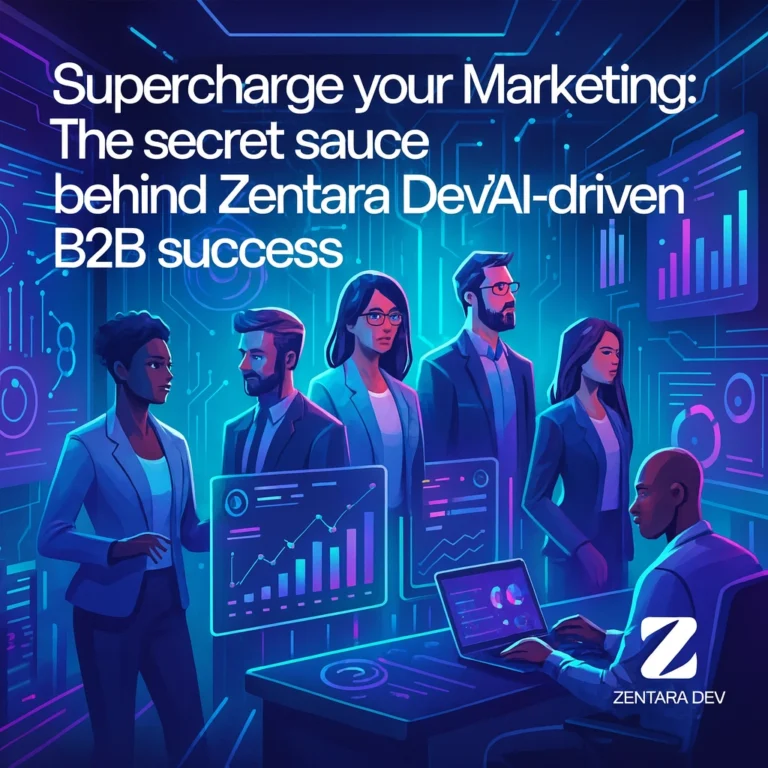Why 90% of Small Businesses Are Invisible to AI Search (And How to Fix It in One Click)
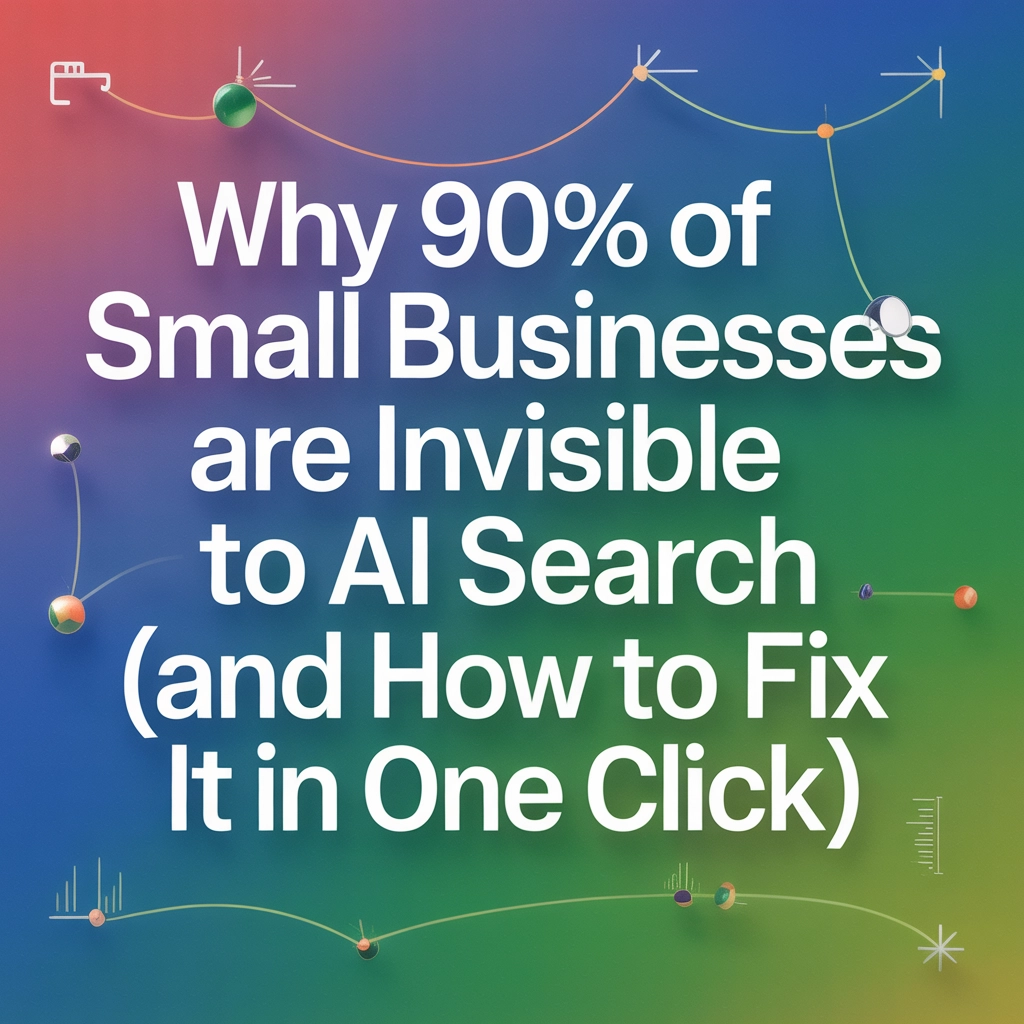
Here's a reality check that might sting: when someone asks ChatGPT, Gemini, or Perplexity about businesses like yours, you probably don't exist in their answer. You're not being dramatic: you're statistically invisible.
The numbers tell a brutal story. 60% of searches now end without any clicks to websites, and 80% of users rely on AI-generated summaries to make their decisions. That means the majority of your potential customers are getting recommendations from AI tools that have never heard of you.
Small businesses are bleeding traffic: losing 15-25% of their web visitors to this invisible crisis. That adds up to approximately $3.2 billion in lost revenue annually across small and medium businesses. And here's the kicker: most business owners have no idea this is even happening.
The New Reality of Customer Discovery
Remember when getting found meant ranking on Google's first page? Those days are fading fast. Now customers ask AI assistants questions like "What's the best local plumber?" or "Which marketing agency should I hire?" Instead of browsing websites, they're trusting AI-generated responses to point them in the right direction.
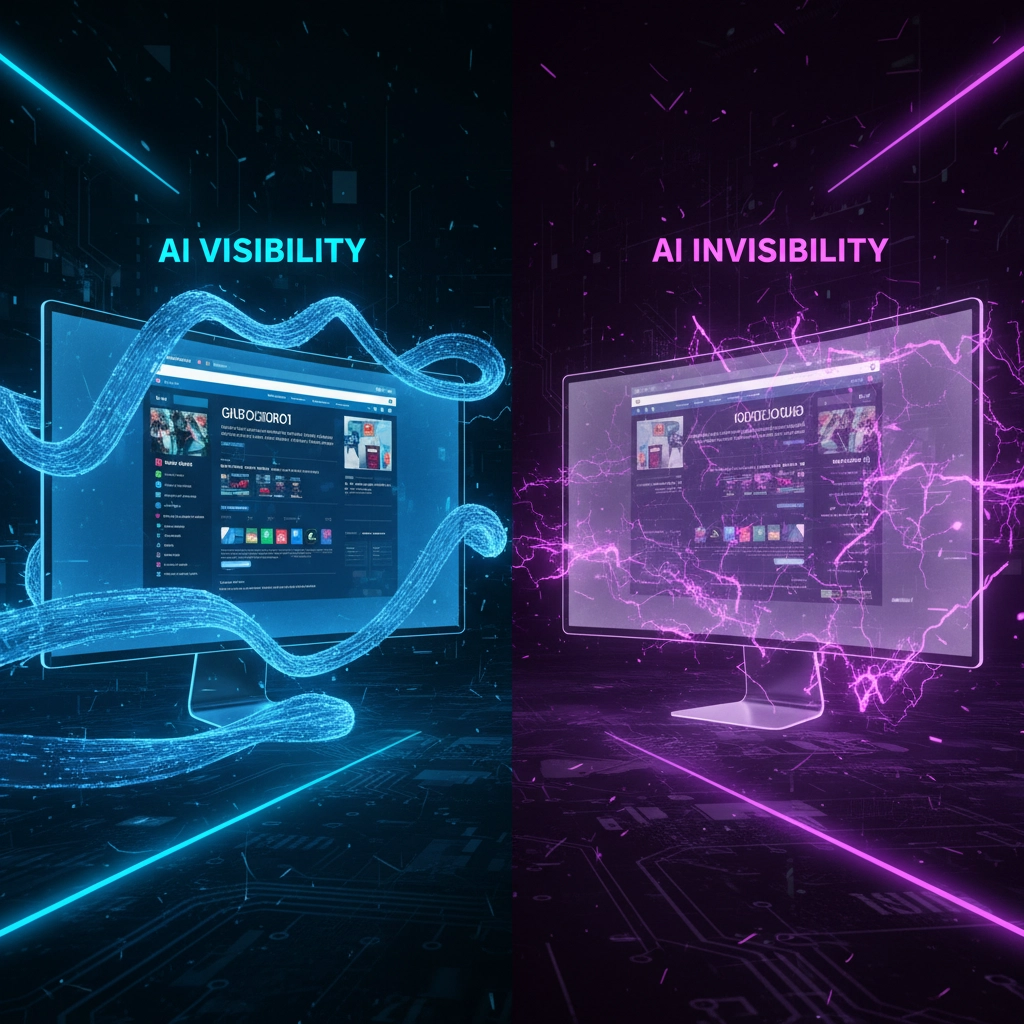
The problem? Most B2B enterprises are completely invisible in AI-generated responses. When potential customers are in that crucial early consideration phase: when they're just starting to research solutions: you're not even part of the conversation.
This isn't just a visibility problem anymore. It's a pipeline problem. If AI tools don't know you exist, you're missing out on those high-intent customers who are actively looking for what you offer.
Why Your Business Is AI-Invisible (The Technical Truth)
Your Content Is Trapped
Here's a simple test that will probably shock you: go to your website, right-click anywhere, and select "View Page Source." Now search for your main selling points, your key benefits, or what makes you different from competitors.
Can't find them? That's because they're likely buried in widgets, images, or JavaScript that looks great to humans but is completely invisible to AI. If your content isn't in raw HTML code, AI systems literally cannot see it. It's like having an amazing storefront with the lights turned off.
Your Digital Footprint Is Too Small
AI engines don't just look at your website: they pull information from review sites, forums, industry publications, and third-party mentions. If you only exist on your own website, AI systems assume you don't have enough credibility or authority to recommend.
Think about it: would you trust a business that only talks about itself and has no outside validation? AI systems think the same way.
You're Still Playing by Old Rules
Many businesses are still dumping money into traditional SEO and Google Ads, completely ignoring the fact that customers are increasingly bypassing Google altogether. AI search requires optimization across multiple engines and platforms, not just the Google ecosystem we've all gotten used to.
The "One Click" Fix That Actually Works
Here's where things get encouraging. The businesses that are adapting early are seeing 40-60% traffic recovery: and some are even seeing growth. One company, Peak Advisers, grew their site traffic by 160% by getting ahead of the AI search curve.
The fastest fix? Make sure AI can actually read your content.

The 5-Minute Content Check
- Go to your most important pages
- View the page source (right-click → "View Page Source")
- Search for your key selling points using Ctrl+F
- If you can't find them in plain text, they need to be restructured
Move critical information out of complex widgets and into simple, readable HTML. Use clear headings, bullet points, and straightforward language. AI systems reward clarity, not clever design tricks.
Building Your AI Visibility Foundation
Get Listed Everywhere That Matters
AI tools pull information from a concentrated set of sources. You need to be present on:
- Google Business Profile (obviously)
- Bing Places for Business
- Industry-specific directories
- Review platforms like Yelp, Better Business Bureau
- Professional networks relevant to your industry

Create Intent-Driven Content
Stop writing blog posts just to stuff them with keywords. Start answering the actual questions your customers ask. When someone searches "how to choose a marketing agency," your content should provide a comprehensive, helpful answer: not a thinly veiled sales pitch.
AI systems favor content that genuinely helps people solve problems. The more useful and comprehensive your answers, the more likely AI tools will reference you as a credible source.
Master the Multi-Platform Game
Success in AI search isn't about gaming one system: it's about building consistent credibility across hundreds of digital touchpoints. This means:
- Maintaining accurate business information everywhere
- Actively participating in industry forums and discussions
- Getting mentioned in relevant publications and blogs
- Building genuine relationships that lead to natural mentions
The Advanced Strategy: Training AI to Know You
Think of AI visibility like building a reputation in a small town. You don't become the go-to local expert overnight: you earn it through consistent, helpful interactions across multiple venues.
Structured Data Is Your Friend
Implement schema markup and structured data on your website. This helps AI systems understand exactly what you do, where you operate, and how you're different from competitors. It's like giving AI tools a clear roadmap to your business information.
Focus on Entity Recognition
AI systems look for "entities": clear, consistent references to your business across the web. Make sure your business name, services, and key information are presented consistently everywhere you appear online.

For businesses in digital transformation like those served by Zentara's AI development services, this consistency is crucial for establishing authority in competitive markets.
Measuring Your AI Visibility
Traditional analytics won't show you how visible you are to AI search. You need to actively test by:
- Asking various AI tools questions your customers would ask
- Monitoring whether your business appears in AI-generated responses
- Tracking mentions across different AI platforms
- Measuring traffic patterns from AI-driven searches
The Early Bird Advantage
Here's the silver lining: we're still in the early stages of this transition. The businesses that adapt now will dominate the AI-first search landscape for years to come. While your competitors are still trying to figure out what's happening to their traffic, you can be building the foundation for long-term AI visibility.
Your Next Steps
The "one click" solution isn't actually one click: but it is straightforward:
- Audit your content visibility using the page source test
- Claim and optimize listings on major platforms AI systems reference
- Restructure your content to be AI-readable and helpful
- Start creating intent-driven content that answers real customer questions
- Track your progress by regularly testing AI responses
The businesses surviving this transition aren't the ones with the biggest marketing budgets: they're the ones that recognized the shift early and adapted their strategy accordingly.
Remember, AI engines don't cite businesses randomly. They look for signals of expertise, authority, and relevance across multiple sources. Your job is to make it inevitable that when someone asks an AI tool about solutions in your industry, your business is the obvious answer.
The question isn't whether AI search will continue growing: it's whether you'll be visible when it does.

